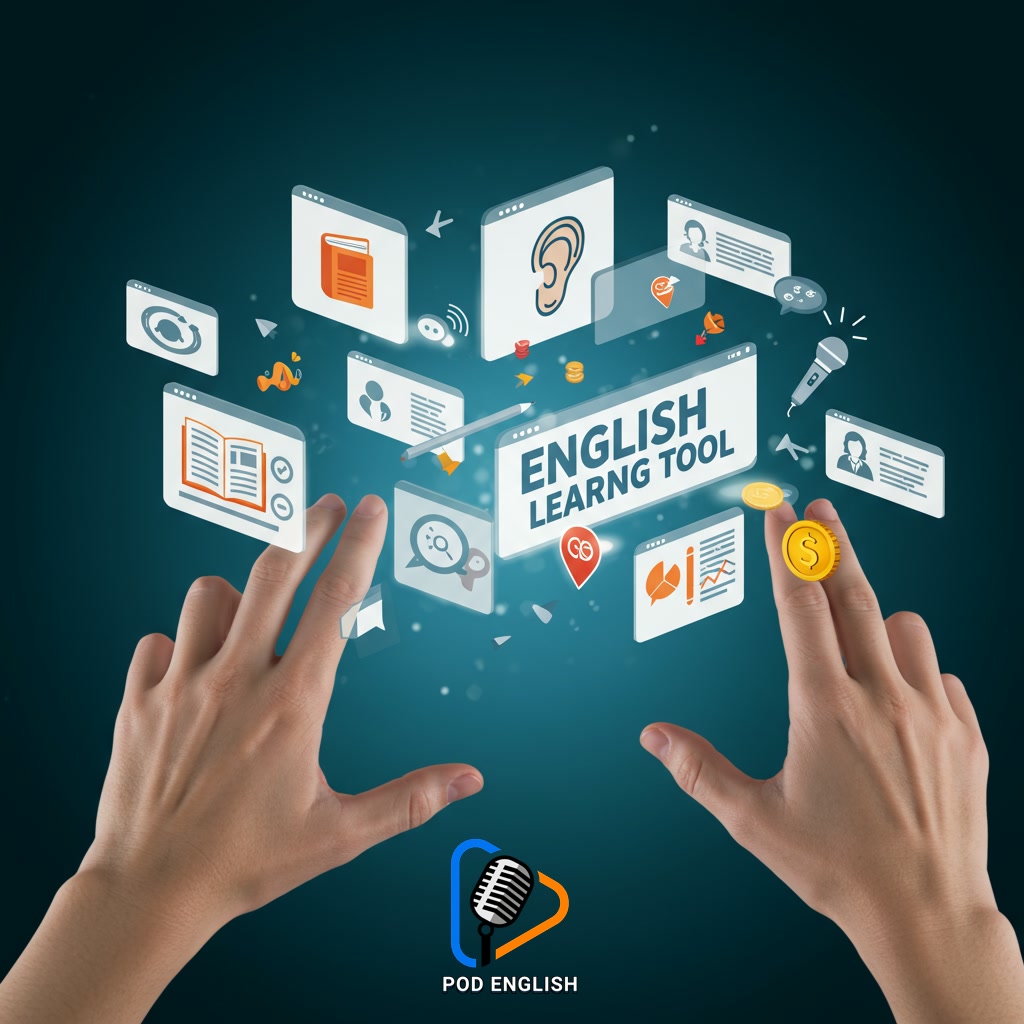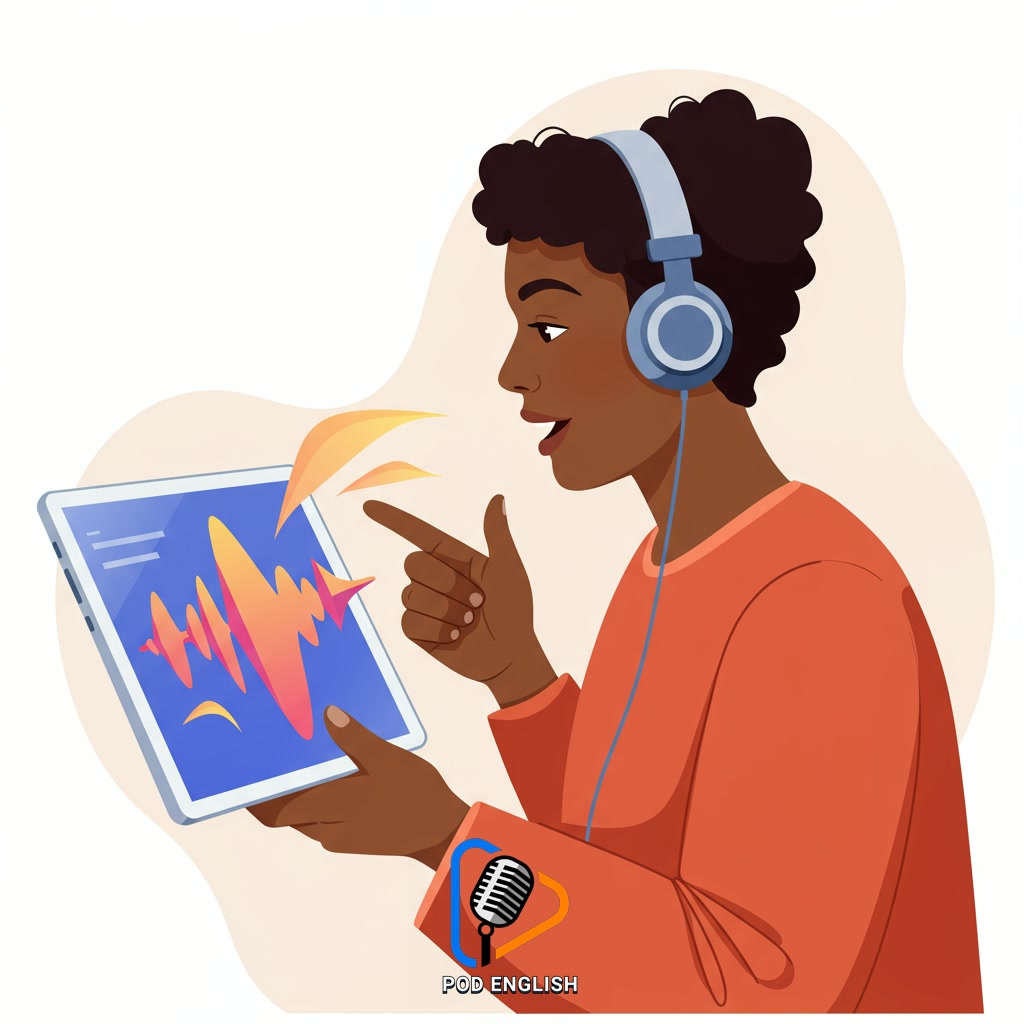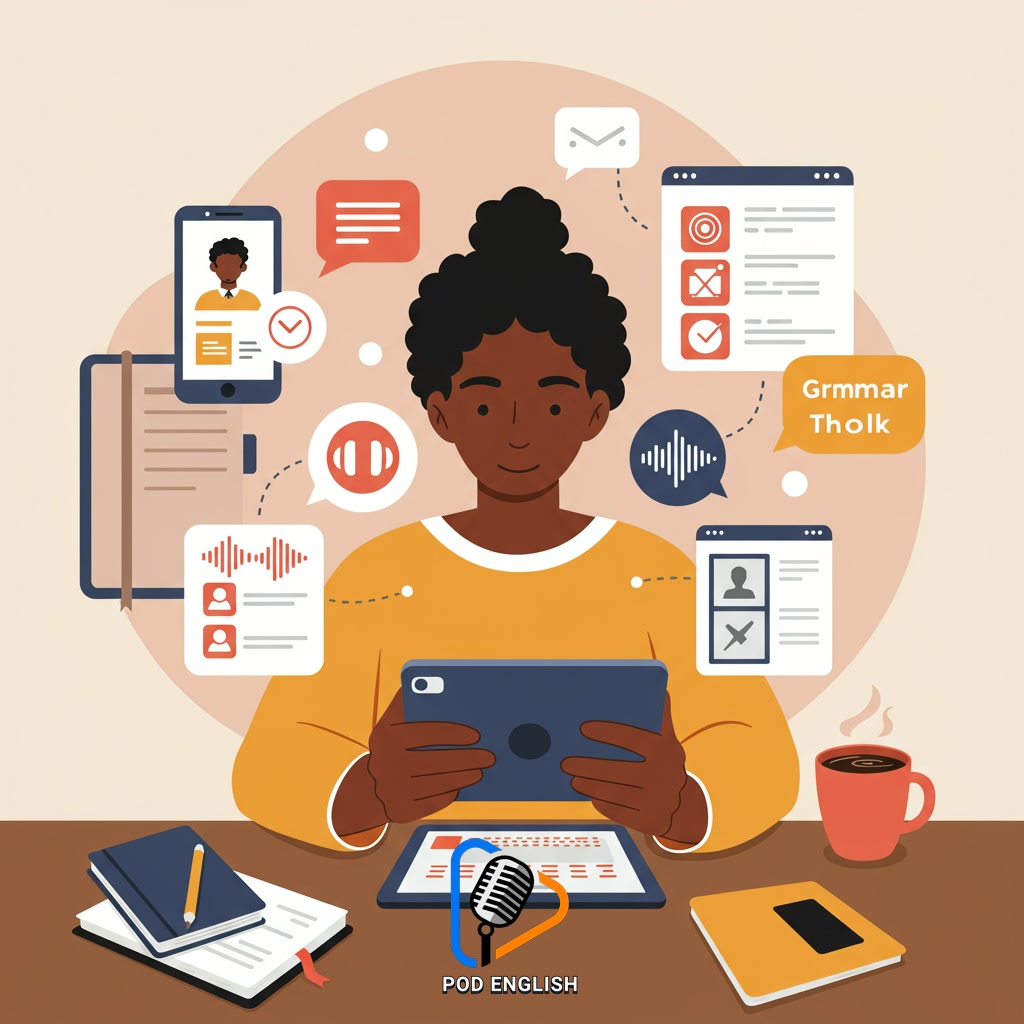Learn English
Your Guide to Learning English: Best Apps and Tools for 2025

This guide provides a comprehensive overview of resources for improving your English skills. It reviews the top recommended apps and digital tools available in 2025. Explore effective platforms and aids designed to support your language acquisition and practice efforts.
Table of Contents
- Section 1: Introduction: The Digital Edge in Learning English for 2025
- Section 2: Criteria for Choosing the Best English Learning Apps and Tools
- Section 3: Top Apps for Vocabulary and Grammar Mastery
- Section 4: Recommended Tools for Improving Listening and Speaking Skills
- Section 5: Essential Resources for Reading and Writing Practice
- Section 6: Integrating Apps and Tools into Your Daily Study Routine
- Section 7: Beyond the Apps: Complementary Learning Strategies for 2025
Section 1: Introduction: The Digital Edge in Learning English for 2025
Learning English has transformed dramatically, and in 2025, the digital landscape offers an unprecedented advantage for learners worldwide. Gone are the days when physical textbooks and classroom-only learning were the sole options. Today, powerful apps, interactive websites, and innovative online platforms provide dynamic, personalized, and accessible pathways to fluency. This introduction explores how embracing these digital resources gives you a significant edge in your language journey. The ability to practice pronunciation with AI, get instant feedback on writing, immerse yourself in authentic content, and connect with native speakers across the globe, all from your device, makes learning more effective and engaging than ever before. As we step into 2025, understanding and utilizing these cutting-edge tools is key to accelerating your progress and achieving your English language goals efficiently.

Introduction: The Digital Edge in Learning English for 2025
Section 2: Criteria for Choosing the Best English Learning Apps and Tools
Following the dramatic transformation of English learning into the digital realm, selecting the right tools is paramount for effective progress. When choosing apps and platforms, consider several key criteria tailored to your individual needs. Look for tools that offer comprehensive content covering all four core skills: reading, writing, listening, and speaking, ideally with interactive exercises and immediate feedback mechanisms. User interface and ease of navigation are crucial; the app should be intuitive, engaging, and free from distractions to maintain motivation. Evaluate the cost structure – is it free, subscription-based, or freemium, and does the perceived value justify the expense? Check if the app caters specifically to your current level, from beginner to advanced, and offers features like personalized learning paths, progress tracking, or community support. Finally, consider practical aspects such as offline access capabilities and compatibility across your devices. By carefully assessing these factors, you can identify the digital aids best suited to support your unique English learning journey in 2025.

Criteria for Choosing the Best English Learning Apps and Tools
Section 3: Top Apps for Vocabulary and Grammar Mastery
Building a strong foundation in English hinges significantly on mastering vocabulary and grammar, the core components of the language. Fortunately, the digital landscape of 2025 offers an array of sophisticated applications specifically designed to enhance these crucial areas. These apps leverage techniques like spaced repetition systems for efficient vocabulary acquisition, presenting new words in context and offering interactive quizzes. For grammar, they provide structured lessons, practice exercises covering various rules, and often instant feedback or explanations for errors, transforming complex concepts into manageable steps. By integrating these dedicated tools into your study routine, you can systematically expand your word bank and solidify your understanding of English sentence structure, making your communication both richer and more accurate.

Section 4: Recommended Tools for Improving Listening and Speaking Skills
Following the foundational skills of vocabulary and grammar, actively developing your listening and speaking abilities is crucial for achieving fluency. The digital tools available in 2025 offer dynamic and interactive ways to practice these essential skills. Look for apps that provide authentic audio content, such as podcasts or dialogues, paired with comprehension exercises to sharpen your listening. Many platforms now utilize advanced speech recognition technology to give instant feedback on pronunciation and intonation, helping you refine your spoken English. Furthermore, some tools facilitate speaking practice through AI-driven conversation partners or connections with native speakers, creating immersive environments to build confidence and fluidity in real-time communication. These resources move beyond passive learning, encouraging active engagement with the spoken language to accelerate your progress.

Recommended Tools for Improving Listening and Speaking Skills
Section 5: Essential Resources for Reading and Writing Practice
Moving beyond receptive and productive skills, mastering reading and writing is fundamental for comprehensive English proficiency. These abilities allow you to engage with a vast array of information and express your thoughts clearly and effectively. In 2025, digital resources offer unparalleled opportunities to hone these skills. You can access diverse texts, from news articles to academic papers, practicing comprehension and critical analysis. Writing tools, including grammar and spell checkers, as well as platforms offering prompts and feedback, provide essential support for developing your written communication. Regularly utilizing these resources is key to expanding your vocabulary in context, understanding complex sentence structures, and articulating your ideas with greater accuracy and fluency, solidifying your overall grasp of the language.

Essential Resources for Reading and Writing Practice
Section 6: Integrating Apps and Tools into Your Daily Study Routine
Successfully incorporating English learning apps and digital tools into your daily schedule is key to consistent progress. Start by identifying specific times each day when you can dedicate 15-30 minutes to using these resources. For instance, use a vocabulary app during your commute, practice listening skills with podcasts during a break, or engage with interactive exercises on a grammar platform in the evening. Link the tools to your goals; if you’re working on writing, use an app that provides feedback on sentence structure, or if reading is your focus, utilize platforms with graded readers. Consistency is more important than duration, so aim for short, regular sessions rather than infrequent long ones. Experiment with different tools reviewed in this guide to find those that best fit your learning style and daily rhythm, making English practice a natural part of your routine.

Integrating Apps and Tools into Your Daily Study Routine
Section 7: Beyond the Apps: Complementary Learning Strategies for 2025
While integrating apps is crucial, expanding your English proficiency requires venturing beyond digital screens. Complementary strategies significantly enhance the learning process in 2025 by providing authentic practice and immersion. Engage in real-world interaction: join language exchange groups, participate in online communities based on shared interests where English is used, or find a conversation partner. Immerse yourself by consuming English media: watch movies and TV shows, listen to podcasts, and read books or articles that pique your interest. Actively use the language in different contexts, such as writing emails, keeping a journal, or even thinking in English. These activities solidify what you learn from apps and digital tools, accelerating fluency and confidence through practical application.

Beyond the Apps: Complementary Learning Strategies for 2025













